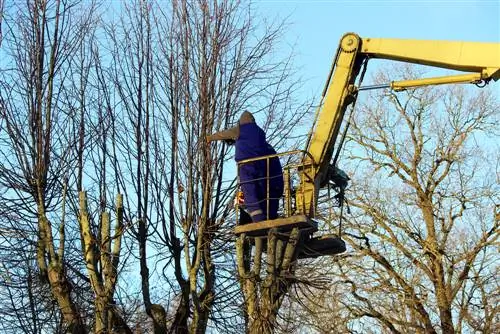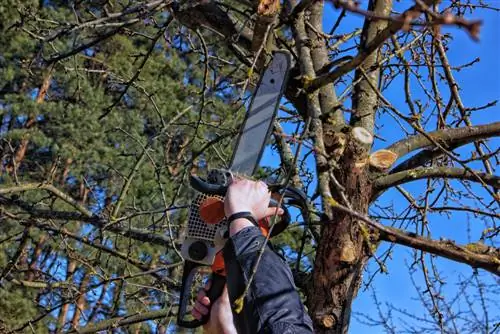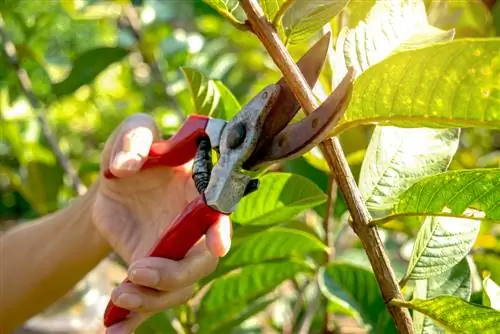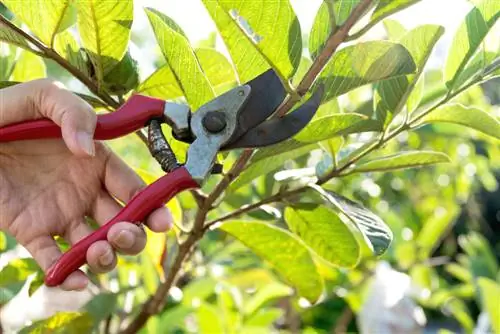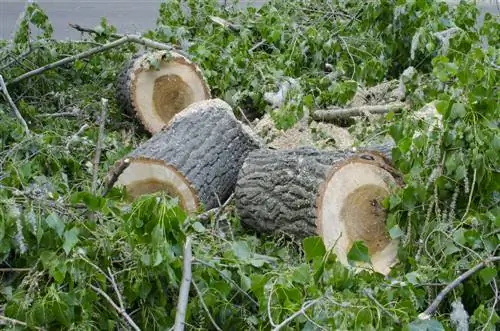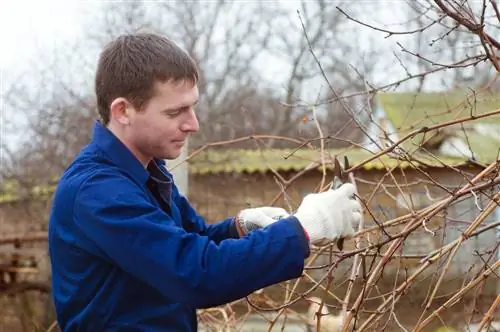- Author admin [email protected].
- Public 2023-12-16 16:46.
- Last modified 2025-01-23 11:21.
Top trimming is a very radical way of shaping linden trees. However, it is common practice, especially in show gardens - and is not a problem here thanks to the professional staff. Because the head cut needs to be skillful so as not to harm the tree.
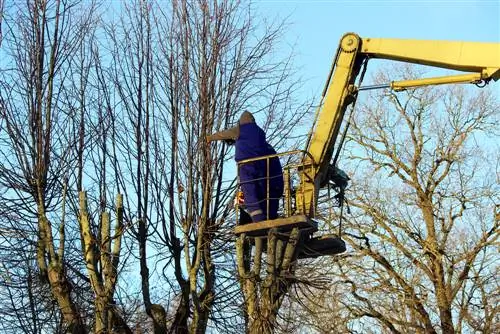
What is the top cut on a linden tree?
When pruning a lime tree, all shoots are shortened every year to just above the bud base in order to achieve a uniform, minimalist tree crown. This method is mainly used in show gardens and should be carried out by professionals.
What is a head cut?
The head cut is a very highly reducing method of crown cutting. With it, deciduous trees are intensively domesticated for aesthetic purposes and trained to achieve maximum uniformity. That's why "decapitated" trees are mainly found in botanical and other show gardens where precise espaliers are created. Linden trees, along with plane trees and horse chestnuts, are popular candidates for this shaping practice as they generally tolerate it well.
When cutting the head, the tree crown is kept to a minimum circumference throughout. To do this, all shoots are shortened every year to just above the bud base. The tree sprouts again and again in these places - and is cut there again the following year. As a result, these areas thicken and become the “heads”, which give the method its name.
The head cutting method at a glance:
- strongly shaping, minimalizing crown cutting method
- is preferably practiced when espaliering in show gardens
- Shoots are shortened above the buds in the same place every year
- The resulting thickenings are called “heads”
Critical Aspects
Such a radical pruning method is of course actually unnatural and should be carefully considered for the sake of the tree's biological balance. After all, the roots, trunk and crown of every tree should actually form a static balance. Hardly any garden has enough space to allow a lime tree with a height of up to 30 m and a crown span of up to 15 m to develop undisturbed. An occasional, simple crown pruning is certainly sufficient in most cases and is completely unproblematic for the lime tree.
Since pruning the head is a massive intervention in the natural growth biology of the lime tree, no mistakes should be made. The most important rules are:
- The head cut must begin with the young tree so that the tree gets used to it
- do not cut branches that are thicker than 5 cm
- the heads must never be injured during the follow-up cuts
- Basically, well-sharpened and, if possible, disinfected cutting tools must be used
It is best to have a head cut done by professionals.

